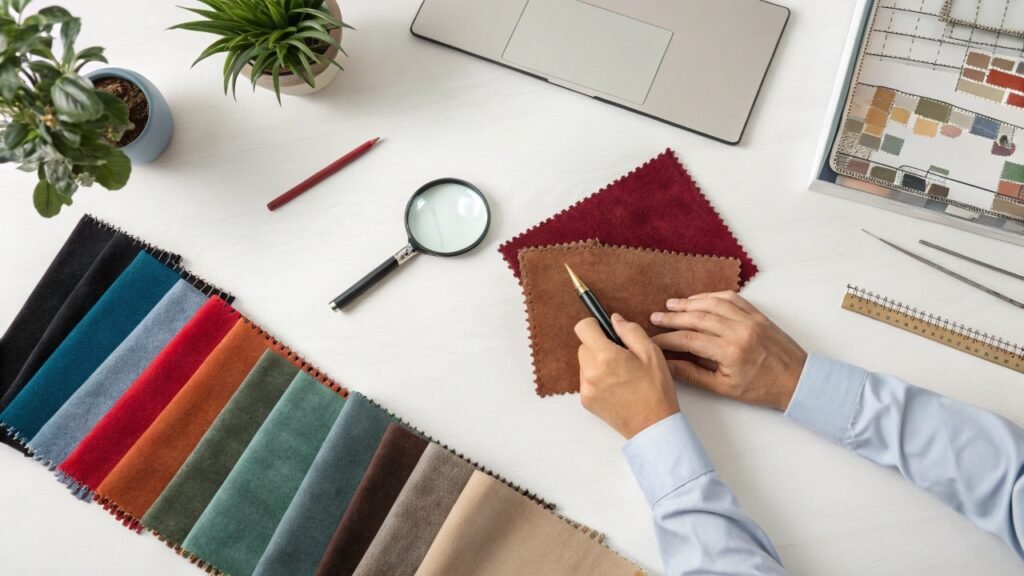You’re thinking of launching a corduroy bag, but assume all fabric is the same. This mistake can lead to poor-quality products, customer complaints, and a damaged brand reputation.
No, not all corduroy is the same. The fabric's quality is defined by its "wale" count, color fastness, and tear strength. A premium manufacturer can enhance this material with waterproof coatings and UV protection, turning a simple fabric into a high-performance asset for your brand.
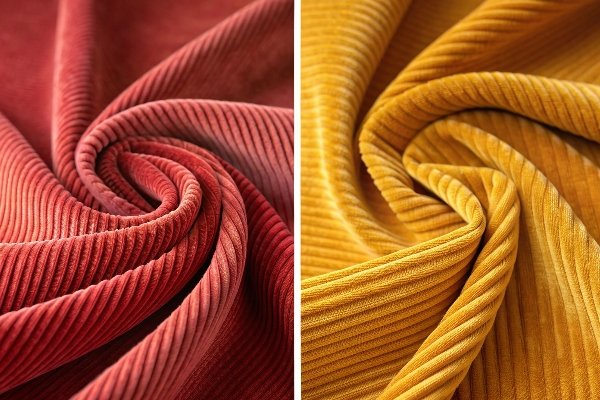
When you see a corduroy bag, you might just notice the soft, ribbed texture. But as a manufacturer with nearly two decades of experience, I see much more. I see the technical specifications that separate a bag that falls apart in six months from one that becomes a customer's favorite for years. Understanding these differences is the first step in creating a product line that truly stands out for its quality and value. It’s time to look closer at the fabric that will carry your brand's name.
What Exactly Are 'Wales' in Corduroy Fabric?
You've noticed that some corduroy bags have thick, bold stripes while others look finer and softer. Choosing the wrong texture by mistake can completely alter your product's intended style.
"Wales" simply refers to the number of ridges per inch of fabric. A lower number, like 8-wale, gives you thick, chunky ribs for a retro look. A higher number, like 16-wale, results in a finer, more delicate texture. This choice is crucial for your bag's final design.
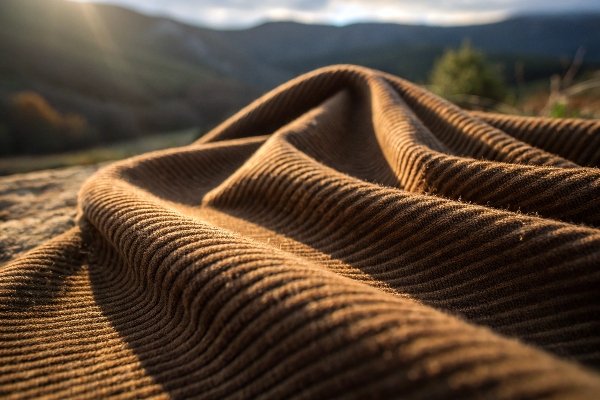
I often consult with designers who have a specific vision for their bag collection. The wale count of the corduroy is one of our first and most important discussions. It’s a detail that fundamentally defines the bag's character. For instance, a brand aiming for a 70s vintage-inspired tote bag would be best served by a classic, chunky 8-wale corduroy. It's bold and has a satisfyingly tactile feel. In contrast, a brand creating a chic, minimalist makeup bag might prefer a 16-wale or even 21-wale corduroy. Its fine ribs offer a more subtle, velvety texture that feels more luxurious. This isn't just a technical choice; it's a core part of your brand's storytelling. Our experts can guide you to the perfect fabric to match your aesthetic.
How Do You Ensure Your Corduroy Bag Won't Fade or Tear?
You worry about angry customers posting reviews with photos of faded or ripped bags. This kind of negative feedback can destroy trust in your brand and lead to costly returns.
We guarantee durability through two key metrics: a color fastness rating of Level 4-5, which prevents fading, and a tear strength that is 300% higher than standard fabrics. This ensures your bags look vibrant and last longer, protecting your brand’s reputation for quality.
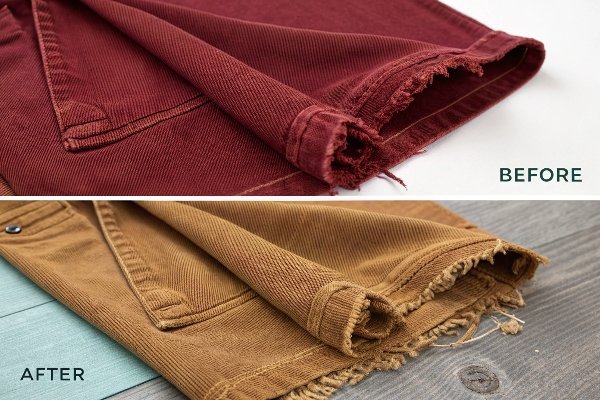
Nothing is more damaging to a brand than a product that fails. A customer might forgive a high price, but they will never forgive poor quality. That’s why we built our production process around quantifiable standards. When we talk about Level 4-5 color fastness, we mean the fabric has been rigorously tested to resist fading from sunlight, washing, and daily friction. Your customer's deep navy blue bag will stay navy blue. When we promise 300% greater tear strength, we mean the bag is engineered to withstand the real world—being overstuffed, getting snagged on a corner, or carried daily for years. This commitment to durability is backed by our ISO9001 quality control system and is a non-negotiable part of our manufacturing promise. It's how we help you build a brand that customers trust.
Can a Corduroy Bag Actually Be Waterproof?
You love the style of corduroy, but customers are asking for more practical, all-weather features. You're afraid the fabric is too traditional to meet modern performance expectations like water resistance.
Yes, a corduroy bag can be waterproof. While standard corduroy is absorbent, we apply a specialized IPX4-rated waterproof coating. This technical treatment transforms the fabric, making it resistant to rain and spills without changing its soft feel, adding significant value for your customers.
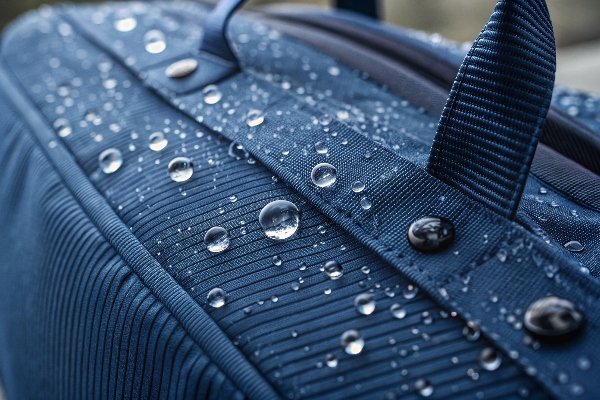
One of the most common questions we get is, "Can you make it waterproof?" The answer is a resounding yes. This is where our technical expertise truly shines. Our R&D center in Guangzhou has perfected the process of applying functional coatings that upgrade traditional fabrics. An IPX4 rating means the bag is protected against splashing water from any direction—perfect for someone caught in a sudden downpour. But we don't stop there. We can also treat the fabric for UPF50+ sun protection. This prevents the beautiful color of the corduroy from being damaged by UV rays, which is especially important for customers in sunny climates. This is how we turn a fashionable material into a high-performance technical fabric, giving you a powerful selling point that most competitors can't offer.
How Can You Get a Truly Custom Corduroy for Your Brand?
You want a unique color or texture for your collection that nobody else has. But most suppliers only offer a limited, standard selection of fabrics, forcing you to compromise on your vision.
We offer complete fabric customization. Leveraging our global sourcing network and in-house R&D team, we can procure or develop corduroy to your exact specifications—unique colors, specific wale counts, or a custom-blended feel. Your brand no longer has to settle for standard options.
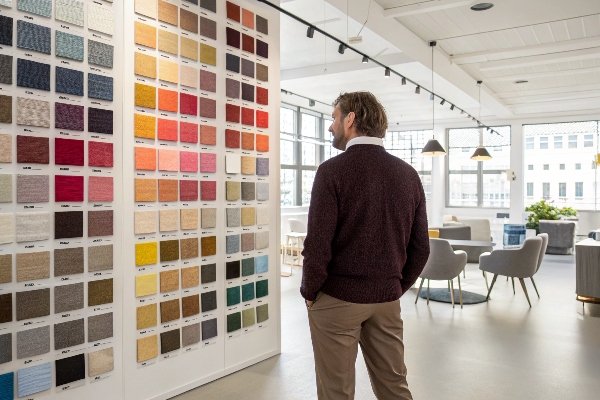
Your brand's uniqueness is its greatest asset. I've worked with many creative directors who come to us with a very specific color from a mood board or a desired texture they can't find anywhere else. Our answer is never "we don't have that." Instead, we say, "let's create it." This is possible because of two of our core strengths. First, our global procurement network gives us access to a vast range of specialty textile mills. If the fabric exists, we can find it. Second, if it doesn't exist, our R&D center in Guangzhou can work on developing it. We can custom-dye fabric to match any Pantone color and experiment with different blends and finishes to achieve a specific hand-feel. This level of deep customization ensures your final product is 100% unique to your brand.
Conclusion
The quality of your corduroy bag starts with the fabric. By choosing a partner who understands the material's science and offers deep customization, you can create a truly superior product.

